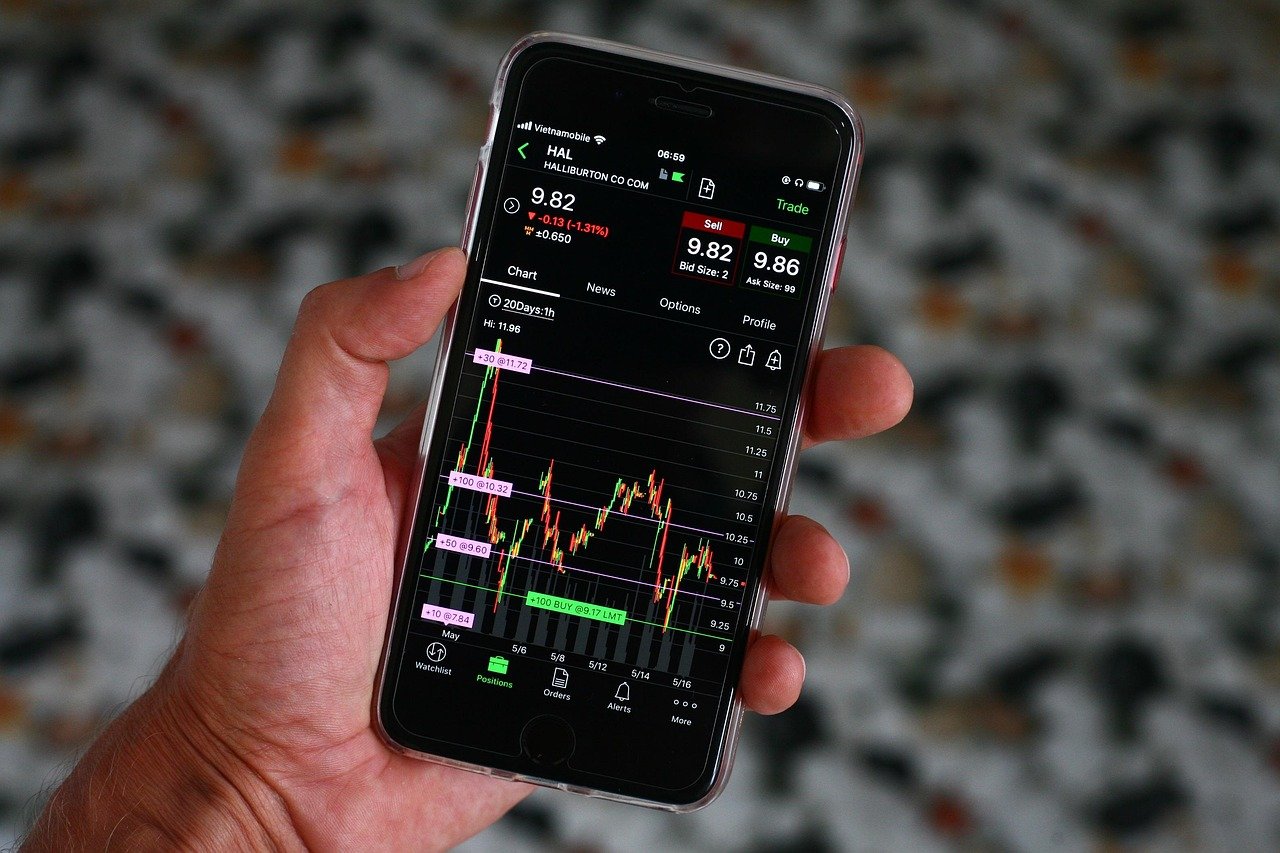IV crush in options trading is a sudden drop in implied volatility that can shrink prices overnight. Learn what IV crush means and how to avoid getting caught.
What is IV Crush in Options Trading? Learn It Like You’re 12 (Simple Guide)
You buy an option expecting a big stock move, and the stock does move as you predicted. But next morning, your option’s price tanks instead of rising. What happened? The likely culprit is IV crush in options trading. In simple terms, IV crush (short for Implied Volatility crush) is a sudden collapse in an option’s implied volatility – usually right after a major event.

This volatility drop causes option prices to plummet, even if the stock’s price moves in the direction you wanted. Don’t worry if that sounds tricky! We’ll break down IV crush in plain English, using easy examples that even a 7th grader can understand.
In this guide, you’ll learn exactly what IV crush means, why it happens (think earnings announcements and big news), and how it affects your calls and puts. We’ll also share 10 key facts about IV crush, side-by-side comparisons of who wins and loses from it, plus tips on how to avoid losing money to IV crush. By the end, you’ll know how to navigate around IV crush like a pro (and maybe even use it to your advantage). Let’s dive in!
Understanding Implied Volatility (IV) – The Fuel Behind Option Prices
Before tackling IV crush, we need to grasp implied volatility (IV) – a core idea in options trading. Implied volatility is basically the market’s prediction of how wild a stock’s price swings might be in the future. If traders expect big ups or downs, IV is high; if they expect calm, IV is low. High IV = expensive options, because there’s a higher chance the option could end up profitable. Low IV = cheaper options, since less action is expected.
Think of IV like the weather forecast for a stock:
- If a storm (big news) is brewing, the “forecast” (IV) shoots up – options prices inflate like an umbrella’s price on a rainy day.
- If sunny skies are ahead, the forecast (IV) stays low – options remain cheap.
Options traders love to watch IV because it’s a key ingredient in option pricing models. It doesn’t tell us which way the stock will move, just how much movement people expectinvestopedia.com. And here’s the kicker: IV can change suddenly, especially around big events. That’s where IV crush comes in, which we’ll explain next.
Tip: If you’re new to options, consider reading our Complete Beginner’s Guide to Options Trading (U.S. Market) for a solid foundation on how options work. Understanding basics like calls, puts, and option premiums will make concepts like IV and IV crush much clearer.
What Exactly Is IV Crush? (Definition in Simple Terms)
IV crush refers to the swift drop in implied volatility that often happens right after a highly anticipated event. It’s like the air rushing out of a balloon once the event is over. When IV falls off a cliff, the “extra value” in options prices vaporizes, causing option premiums to collapse. In other words, IV crush is when an option’s price suddenly sinks because the market’s fear or uncertainty disappears.
Here’s a simple way to picture it:
- Before a big event (like earnings, FDA decision, etc.), everyone’s nervous about what might happen. Implied volatility climbs up and options become pricey. Think of it as pre-event hype – options buyers are willing to pay more, and sellers demand more, because “who knows what could happen?”
- After the event, the secret is out. The uncertainty is gone – poof! – and implied volatility gets “crushed” back down to normal. With less expected drama ahead, options instantly lose that extra hype premium.
So, IV crush = volatility goes from high to low super fast, making options lose value overnight. It doesn’t matter if the stock’s actual move was small or even in your favor; the drop in IV alone can drag down the option’s price significantlysofi.com.
Key Point: IV crush usually happens right after major known events. If an event had traders expecting a big swing (high IV) and then it passes, the “exciting uncertainty” vanishes. The result is an IV crush. The most common example is after earnings announcements, which we’ll cover next.
When and Why Does IV Crush Happen?
IV crush happens most often after events that the market was anxiously waiting for. The classic scenario is company earnings. Let’s break down why:
- Before Earnings: Say BigTech Co. is reporting earnings Thursday. In the days leading up, traders expect the stock could jump or crash based on results. This uncertainty pushes implied volatility way up. Options become expensive because everyone thinks a big move is possible.
- After Earnings: Thursday evening, BigTech Co. releases solid but unsurprising results. On Friday morning, the stock moves just a tiny bit. All that extra implied volatility (the pre-earnings hype) vanishes, since the big unknown is resolved. IV plummets – an IV crush – and with it, option prices drop.
This pattern doesn’t just apply to earnings:
- Mergers/Buyouts: Rumors of a big buyout can pump IV up. Once the news is confirmed or denied, IV crashes back down.
- Product Launch or FDA Approval: Before a biotech drug approval or a new iPhone launch, uncertainty is huge (high IV). After the decision or launch day, uncertainty fades (IV falls).
- Economic Reports or Fed Meetings: Prior to a Federal Reserve interest rate announcement or jobs report, market IV often rises. After the announcement, IV usually declines sharply.
- Market-Wide Volatility Spikes: Sometimes overall market fear (like a volatility index spike) can come and go, causing a broad IV crush once fears subside.
In short, IV crush follows the “calm after the storm.” It’s the market saying “Phew, now we know what happened, so no need for those high volatility prices anymore.” A company’s earnings report is a common trigger for IV crush, with implied volatility typically spiking before and plummeting right after the announcementsofi.com. The same logic applies to any anticipated event: high IV leading in, crush coming out.
Real-World Note: Traders often predict an IV crush. For example, before earnings, they know options are pumped up. The moment earnings drop, they expect an IV crash. That’s why you’ll hear advice like “avoid holding long options through earnings” – because the ensuing IV crush can hurt you (even if your prediction on the stock was right).
How IV Crush Affects Option Prices (Calls & Puts)
Now, let’s see what IV crush actually does to option prices. Implied volatility is a major component of an option’s price (the extrinsic or “time value” part). When IV collapses:
- Call Options: A call’s price can drop sharply due to IV crush. Even if the stock goes up a bit, the call might lose value if the volatility drop is big enough. This is why sometimes you’ll hear, “The stock went up, but my call option went down!”
- Put Options: Similarly, a put’s price can tank when IV gets crushed. The stock might fall slightly (which normally helps a put), but the sudden IV drop can outweigh the stock move. Result: the put loses value too.
Both calls and puts feel the pain of IV crush if you’re holding them long (as a buyer). Why? Because both had inflated volatility premiums that just got slashed. It’s not about call vs put – it’s about being long options during a volatility collapse.
Let’s illustrate with a simple example:
Imagine Stock ABC is at $100. It’s Tuesday and ABC reports earnings on Wednesday after market. Options expiring Friday are pricey due to sky-high IV (say 80% IV, very high). You buy a 100 strike call for $10 on Tuesday, hoping the stock pops. An investor friend sells (writes) a 100 strike call, collecting $10 from you.
After earnings, ABC moves to $103 – a moderate rise. Normally, a $3 rise would make that call more valuable. But, implied volatility crashes from 80% to, say, 30% post-earnings. By Thursday morning, that same call is only worth $7. IV crush wiped out $3 of value in the option premium.
- You, the call buyer, lost $3 (your option fell from $10 to $7) despite the stock going up.
- The call seller (who sold at $10) is happy, because they can buy back the call for $7 and pocket $3 profit, thanks largely to IV crush.
This scenario shows how IV crush can override the stock’s move. The stock rose 3%, but the option fell 30% due to volatility collapsing. Time decay (theta) also played a minor role overnight, but the big damage was from volatility (vega).
An example options trading app interface (similar to Robinhood) showing call and put options with their premiums. Implied volatility is a key factor in these premiums. Before a big event, IV might boost these prices significantly. After the event, an IV crush can cause these option prices to shrink dramatically, even if the stock’s price barely changed. In our example, the call option’s price dropped from $10 to $7 overnight due to IV crush – a stark lesson for option buyers.
Bottom line: IV crush can hit option buyers hard. You can guess the stock move correctly and still lose money because the option’s volatility premium got crushed. It feels unfair, but it’s how options work. On the flip side, who benefits? The option sellers who took the other side of those trades. They sold options when IV (and thus premiums) were high and get to buy them back cheaper after IV collapses.
In fact, IV crush often rewards sellers: If IV is high, the odds favor those who write (sell) options – they collect rich premiums and can profit when volatility fallsinvestopedia.cominvestopedia.com. Conversely, buyers who paid those high premiums might end up losing when the expected big move doesn’t pan out and IV craters. It’s often said that high implied volatility “pays” the sellers and punishes the buyers.
Tip: Always check an option’s implied volatility % (many broker apps show IV for each contract). If the IV is extremely high because of an upcoming event, know that an IV crush is likely after the event. This doesn’t mean never buy options during high IV – but be aware you’re paying a big premium that could disappear fast. Sometimes using spread strategies (one option against another) can help offset a volatility crush, as we’ll discuss later.
10 Key Facts About IV Crush (Quick Summary)
Let’s summarize and highlight 10 essential facts about IV crush in options trading. These points will give you a side-by-side look at different aspects of IV crush and its implications:
- Definition – Sudden Volatility Drop: IV crush means a rapid decline in implied volatility after a major event. It causes option premiums to drop sharply in a short timesofi.com. Think “volatility bubble burst.”
- Common Triggers: The most common trigger for IV crush is a high-profile event (earnings release, news announcement, economic report). IV rises before the event and often plummets right aftersofi.com.
- Effects on Option Price: IV crush directly reduces the extrinsic value of options. Even if the underlying stock moves as expected, an option’s price can fall because the volatility component of the price got crushed.
- Impact on Calls vs. Puts: Both calls and puts are affected equally by IV crush in terms of volatility. It’s not about the option type – it’s about how much volatility was priced in. Calls and puts with high IV will both lose value when IV drops.
- Who Gets Hurt: Options Buyers (long calls or long puts) get hurt by IV crush. They often see their option investments lose money due to the volatility collapse, sometimes despite being right on the stock’s direction.
- Who Benefits: Options Sellers (writers of calls or puts) can benefit from IV crush. They sell options at pumped-up prices (high IV) and profit when those options sink in value after IV fallssofi.com. High IV is like a gift to sellers, as long as the actual stock move isn’t too adverse.
- Relation to Time Decay: IV crush is separate from time decay (theta), but both can tag-team against option buyers. Time decay erodes option value as expiration nears, and an IV crush can inflict an additional sudden loss. After an event, you often experience both: one big volatility drop plus another day closer to expiry.
- Predictability: IV crush is highly predictable in timing – it happens after known events. Everyone knows when an earnings call is, just not the outcome. So traders can anticipate an IV crush; what’s unpredictable is the stock’s move. This is why many traders avoid holding long options through known event dates.
- Avoiding IV Crush Losses: To avoid losses from IV crush, you can close positions before the event, or use strategies that aren’t hurt by volatility drops. For example, option spreads (like a call spread or straddle) can reduce net vega (volatility exposure), so an IV drop won’t hurt as much. We cover more strategies in the next section.
- Profiting from IV Crush: Savvy traders even try to profit from IV crush. They might sell options or spreads ahead of an event, aiming to buy them back cheaper after volatility collapses. This can be done with defined-risk strategies (e.g. iron condors or calendars) to collect premium from the expected IV drop. Warning: Selling naked options is risky (unlimited loss potential), so it’s typically for advanced traders only.
These points give you a comprehensive snapshot of IV crush. Essentially, it’s all about volatility expectations building up and then crashing down, and understanding who wins and loses in that process.
Strategies to Avoid (or Take Advantage of) IV Crush
Now that you know what IV crush is and when it strikes, let’s talk strategy. How can you, as an options trader, avoid getting crushed – or possibly use IV crush to your benefit? Here are some practical tips and strategies:
- Avoid Holding Through the Event: The simplest rule – don’t hold long options positions through known volatile events (like earnings). If you own calls or puts with high IV priced in, consider closing or reducing them before the announcement. As one trader mantra goes: “IV crush can’t hurt what isn’t there.” By stepping aside, you sidestep the volatility rug-pull altogethermedium.com.
- Use Spread Strategies: If you do want to trade an event, consider spreads instead of a single-option bet. For example, a vertical spread (buy one option, sell another) or a butterfly spread limits your risk. These strategies involve both long and short options, so an IV crush on the long leg is partially offset by a volatility drop in the short legmedium.com. You won’t make as much if you’re right, but you’ll lose less if volatility tanks the premiums.
- Choose Later Expirations: Options that expire right after the event have the most inflated IV (and thus the most dramatic crush). If you buy options that expire further out (say a few weeks after the event), the immediate IV crush impact is spread out and less severemedium.com. The option won’t lose as much volatility value overnight compared to a near-term option – though note, you’re also paying for more time, and your gains will be smaller if you were right.
- Consider Selling High-IV Premium (Carefully): Advanced move – sell options when IV is extremely high to potentially profit from the crush. For instance, some traders sell straddles or iron condors before earnings, expecting to profit when option prices deflate afterward. Selling at high IV is like selling overpriced insurance – if nothing crazy happens, you keep the premium. IMPORTANT: If the stock makes a huge move, a seller can face big losses. To manage risk, many use defined-risk spreads or only risk what they can afford to losemedium.com.
- Balance Your Portfolio’s Vega: Vega measures sensitivity to IV. If you have many long options (positive vega) going into an event, you’re very exposed to an IV crush. Try balancing with some short options (negative vega) positions. For example, if you own calls on a stock into earnings, you might sell a call on another high-IV stock or sell a put for some premium. This way, if volatility collapses market-wide, the losses on long options might be offset by gains on the short options.
- Do Your Research: Not all stocks have equal IV crush. Check past earnings moves for your stock – did the options implode afterward? Some stocks have a history of big IV crush (e.g., options on $AAPL or $NFLX typically lose a lot of value post-earnings if the move was moderate). Knowing the past pattern can guide how much risk to take.
- Don’t Forget the Basics: Ensure you’re using a good platform with tools to analyze IV. Many modern brokerages (like Robinhood, Thinkorswim, etc.) show implied volatility graphs or greeks for options. If your platform doesn’t, consider one that does. In fact, choosing the right platform can help you manage these situations better – our list of Best Brokers for Options Trading in 2025: Top Apps highlights trading apps with helpful options tools and low fees for beginners.
The chart above shows a Volatility Index on a smartphone, illustrating how volatility can spike and drop. Notice the sharp peaks followed by steep declines. This is similar to how implied volatility behaves around events: it surges before big news, then crashes afterward (IV crush). As an options trader, you want to avoid being on the wrong side of that cliff. One tip is to watch indicators like the VIX (often called the market’s “fear gauge”). If overall market volatility (VIX) is very high and starts dropping, it can lead to a volatility crush in many options across the marketnasdaq.comnasdaq.com. Being aware of these signals can help you time your trades better.
In summary, to avoid IV crush, plan your trades around the known volatility events. If you must trade them, use spreads or risk-defined tactics. And if you’d rather profit from IV crush, do so carefully with proper risk management. There’s nothing worse than being right about a stock’s direction but still losing money – so always account for volatility in your game plan!
Real-Life Example: IV Crush After Earnings (Step-by-Step)
Let’s walk through a step-by-step real-life style example to cement the concept of IV crush. We’ll use a popular broker interface (similar to Robinhood) and a fictional scenario:
Scenario: You’re trading Stock XYZ, which is $50 per share. It’s Monday, and XYZ reports earnings on Wednesday after the close.
Step 1: Pre-Earnings Hype – On Monday, you open your trading app and look at the options chain for XYZ (calls and puts). You see the at-the-money $50 call is priced at $4.00, and the $50 put is $3.80. These prices are high because implied volatility is, say, 60% – quite elevated. Your app might even show an “IV” value or a volatility graph indicating how IV climbed over the past weeks in anticipation of earnings. You decide to buy the $50 call for $4.00, expecting a big upside surprise from earnings. (At this point, IV is high – you are paying a premium largely due to uncertainty.)
Step 2: Earnings Hit – Wednesday after market, XYZ announces decent earnings, but nothing shocking. By Thursday morning, the stock opens at $53 (up $3, a 6% jump – nice, right?). However, traders now know the results; the uncertainty is gone. Implied volatility for XYZ options crashes from 60% to 30%. This is the IV crush we expected.
Step 3: Post-Earnings Options Prices – You check the app again Thursday. That $50 call option you bought is now maybe $2.00 bid/$2.20 ask. Wait, how can it be roughly $2 when the stock is $3 higher? Here’s how: The call is now in the money by $3 (intrinsic value), but its extrinsic value (time value) got wiped out from $1 (before) to only maybe $0.20 now because IV collapsed and only two days remain to expiration. In other words, the option’s price is mostly intrinsic now. You paid $4, and it’s only worth about $2.10 (midprice). You’re down almost 50%, even though the stock did rise. That 50% loss is due to IV crush and a bit of time decay. If the stock had barely moved or gone down, the loss would be even larger.
Step 4: Lesson Learned – You realize that buying the option before earnings was risky because you were fighting against implied volatility. Had you instead done, say, a bull call spread (buy $50 call, sell a $55 call), the cost would’ve been lower and the sold $55 call’s premium would cushion the volatility crush. Or, you could have simply waited until after earnings to trade, avoiding the inflated volatility prices. Next time, you decide: if implied volatility is sky-high, be cautious – either sit it out or use a strategy that mitigates IV crush.
This example highlights in a step-by-step way how IV crush plays out in practice on a broker platform:
- High IV pre-event → inflated option prices.
- Event passes → IV plummets.
- Option prices adjust downwards, sometimes dramatically.
Seeing it on an app like Robinhood, you’d notice the option’s price chart show a sudden drop after earnings. Many beginners learn about IV crush the hard way, just like in this scenario. But now you know better!
Conclusion: Stay Aware of the IV Crush Rollercoaster
IV crush in options trading might sound like a complex term, but at its heart it’s a simple concept: what goes up (implied volatility) must come down (once uncertainty is gone). It’s like the rollercoaster build-up and then the big drop. The key takeaway for any trader – even a 7th-grade student investor – is that options aren’t just about stock direction. They’re also about the market’s expectations.
If you remember nothing else, remember these two points:
- High anticipation = high option prices. When everyone’s bracing for something (earnings, news, etc.), options get expensive.
- After the fact = volatility crash. Once the news is out, that extra “what if” premium vanishes, often overnight. That’s IV crush.
By understanding IV crush, you can avoid nasty surprises where your option bets lose money despite correct predictions. Use this knowledge:
- Plan your trades around known events.
- Consider strategies to hedge or reduce volatility exposure.
- If you see an option that looks “too expensive,” ask if implied volatility is the reason.
- Conversely, if you see an opportunity to sell pricey options safely, IV crush might be your friend.
In options trading, knowledge is power. Now that you know what IV crush is and how it works, you’re better equipped to trade smartly and protect yourself from volatility traps. May your options trades be ever in your favor – and may IV crush only surprise you when it’s making you money!
Please visit Academic Broadcasting Platform for getting more information about option trading.









